I created this Downloadable Gluten Free Flour Guide to help you learn more about gluten free flour. It started because I wanted to learn more about all the flours in my cupboard, how to substitute when I ran out and how to improve recipes that didn't work so well with my everyday flour blend (I now call this my EGFG Flour Blend).
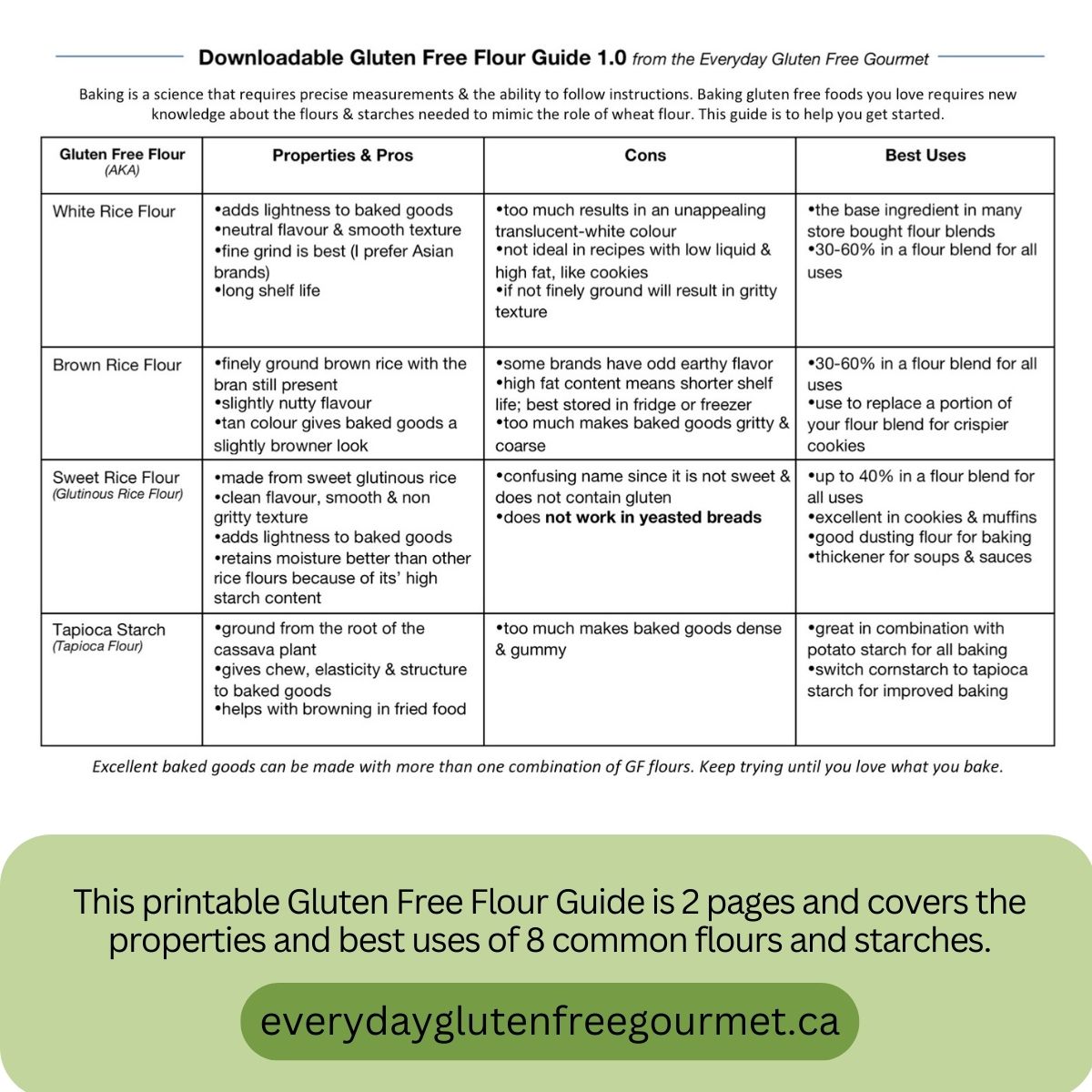
These are the kind of skills gluten free bakers need to confidently make substitutions and tweak recipes until you love them.
As I learned I started to share and it turned into my yearlong blog series on How To Use gluten free flours. I wanted to know the properties of each one, best uses and how to substitute. Then I wanted to share that information with you in a useable format. The two tables below is what I ended up with.
8 Gluten Free Flours and Starches For Baking
We have so many flour options to choose from it can be overwhelming. I started with the flours and starches most commonly called for in gluten free recipes. That included the rice flours (white, brown and sweet) plus three starches (cornstarch, tapioca and potato).
Then I included sorghum flour and millet flour to make eight items. These two flours aren't as common (I’d never even heard of them when I started gluten free baking) but they're the ingredients that really transformed my baking. I now use them both in my homemade flour mix (my EGFG flour blend) but remember, you might prefer something a little different. There is no one way to do gluten free. Find what works for you and the recipes you like to make.
Printable Gluten Free Flour Guide
These are my two tables that I call a downloadable Gluten Free Flour Guide. Here's how you can use it.
- Print both pages and tape it to the inside of a cupboard door where you can easily refer to it.
- Save it to your device where you can easily find it. (I'd love to hear about your system for that!)
- Print it back to back, put it in a plastic sleeve and keep it with your flour or recipes then keep it somewhere so you can easily refer to it.
PAGE 1 - White Rice Flour / Brown Rice Flour / Sweet Rice Flour / Tapioca Starch
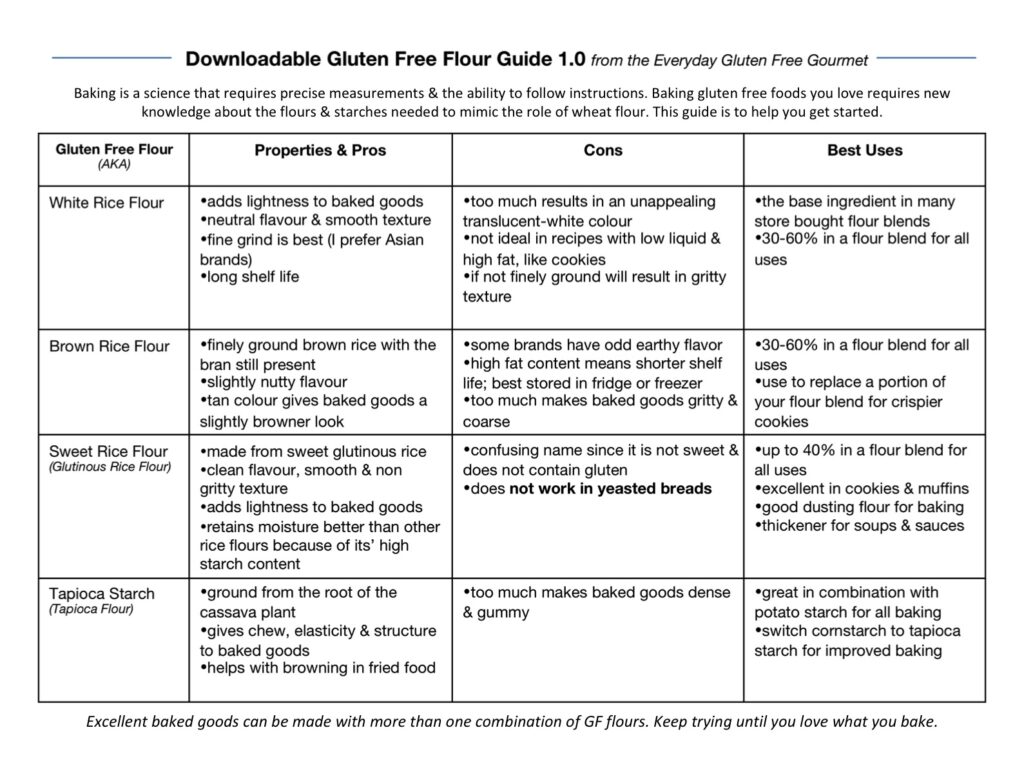
PAGE 2 - Cornstarch / Potato Starch / Sorghum Flour / Millet Flour
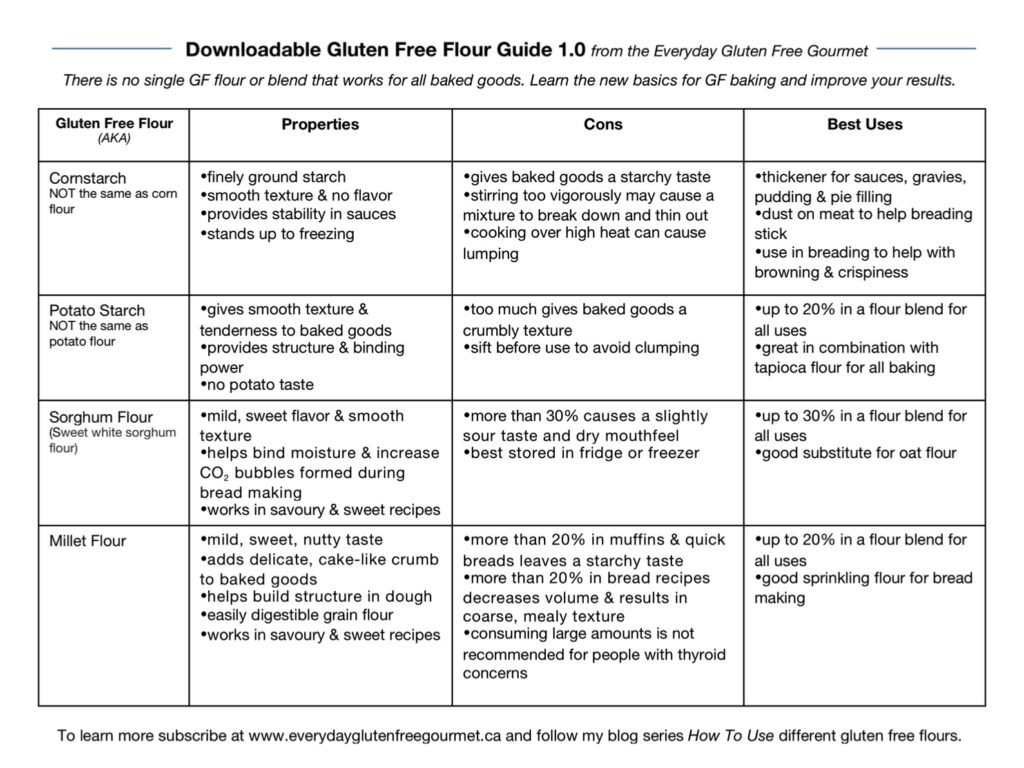
Where Do I Start?
Start with what annoys you. Pay attention to the questions that pop into your head when you’re in the kitchen. Focus on solving those problems one at a time.
- Do you want to make a rich, smooth gravy?
- Are you still trying to master delicious chewy cookies?
- Do you wish you had a less expensive alternative to store bought flour blends or mixes?
- Are you happy with your blend but want to tweak some recipes?
Just start where you are and go from there. Cooking and baking is the best way to learn.
Get The Tools To Organize Your Gluten Free Flour
Organizing flour is a new challenge for gluten free cooks that requires space and takes time. Once you've done it, or tweaked it one last time, you won't believe what a stress reducer it is. After I organized the ingredients and tools to make my own free flour blend I can now make it in minutes with ease.
Use this list as an idea and create a system that works for you.
- Clear container that easily holds all the things and fits in a convenient location.
- Kitchen Scale for accurate measuring.
- Small plastic bowls of identical weight so they're interchangeable.
- Clear canisters with wide tops for ease of spooning out flour.
- Mesh strainer to get the lumps out of potato starch.
- Whisks, essential for thoroughly mixing gluten free flours.
- Large GF Flour Mix Container big enough but not too big it can't fit on the shelf. Mine comfortably holds my recipe that makes 8-cups.
- Smaller wide mouth Jam Jar with Plastic Lids for the leftover flour mix when I'm ready to make a new batch.
In case you're wondering this system is for my EGFG Flour Blend. I also have a bucket that lives right behind this one, in the back of the cupboard, with many different flours in it. Finally, I also used an old DVD case to store less used flours together in the freezer. It's easy to grab and I don't worry about them going past the expiry date, it happens!
It takes time to determine what you want to store and what you'll never use. Plus it will change over time. Don't overthink it, just take the first step to organize!
Watch On YouTube
Here's how I make and store my blend. Don't underestimate the value of a good system that allows you to make any flour blend you need in minutes. Skip to the 6 minute and 23 second mark in this video to see the organization part.
Let me know in the comments below how you used this gluten free flour guide, what you learned or are still trying to learn. I'm curious to know if you printed it or used it on a device.
More Help For Using Gluten Free Flour
- How To Use Rice Flour - The first in a series of 12 blog posts
- How To Use A Gluten Free Flour Blend - The last in a series of 12 blog posts
- 11 Gluten Free Flour Recipes - a blog post
- Gluten Free Baking By Weight - a blog post
- EGFG Flour Blend - a recipe
- Gluten Free Cookie Flour Blend - a recipe
- Tips For Making Gluten Free Cookies - a blog post
- Tips for Making Gluten Free Pastry - a blog post
__________________________________________________________________________
New here? Subscribe and get your FREE resource, the tips I wish I knew when I started cooking gluten free.
Looking for more help with gluten-free cooking? Check out our Cooking Classes.
_________________________________________________________________________


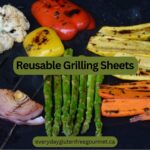


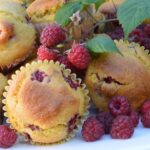

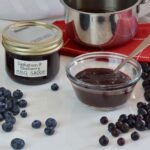
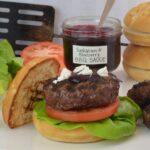
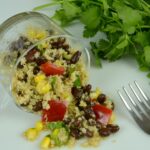
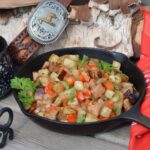



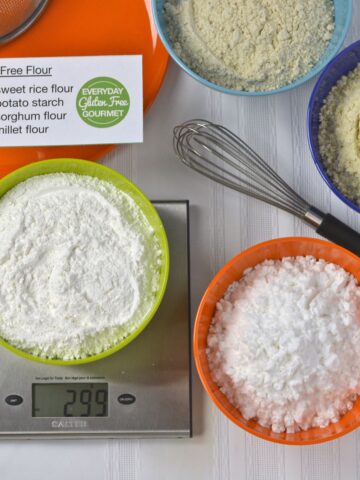
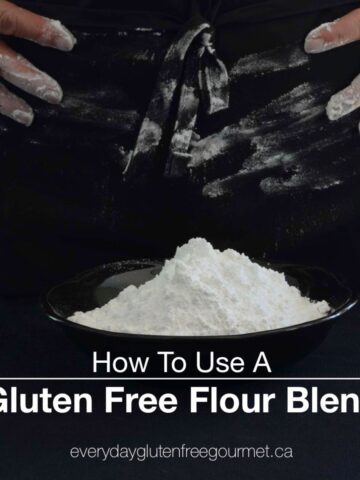
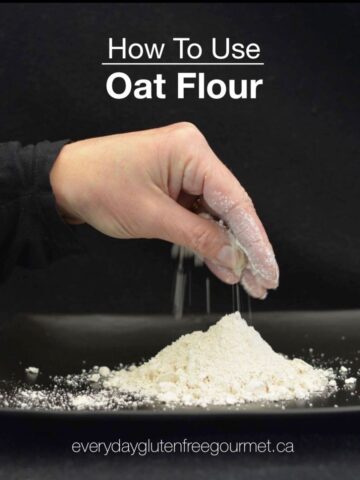
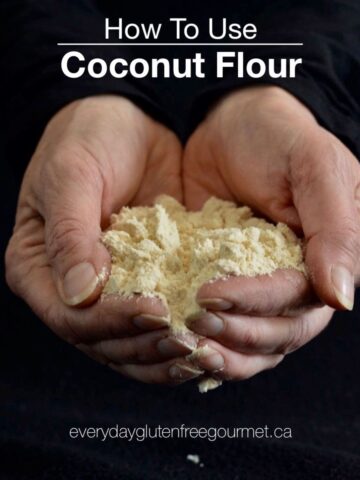
Toby Mitchell
I sure could use help! I have Mast Cell Activation, so most foods cause problems for me. So far I know I can't have rice, corn, tapioca, gluten, coconut, soy, and most nuts & beans. I am trying potato, arrowroot, sorghum, buckwheat, millet, & quinoa. I don't know how I'll react, but of these, any suggestions on how I can make something bready? Thank you!
Cinde Little
Hey Toby, all my readers will feel for you and some can relate. Food restrictions are tough! Here are a few ideas: 1) Substitute potato starch, arrowroot or a combination of those 2 in recipes calling for tapioca starch or cassava flour. 2) There is an Indian flatbread called Jowar made with just sorghum flour. Some recipes add a starch but give it a try and make it 3-5 times, I guarantee you'll learn a little each time and might be happy with it in the end. 3) Savoury buckwheat crepes popular in France is another possibility. My recipe uses tapioca starch but try them with the substitutes I suggested. 4) Russian blini (or blintz) is a leavened pancake made with buckwheat flour. I serve mine with smoked salmon on top. 5) America's Test Kitchen has a recipe for millet bread that uses millet flour, cooked millet and a GF flour blend. You could try something like that with this GF blend - 2 cups sorghum flour, 1/2 cup potato starch and 1/2 cup arrowroot starch. 6) I make another pancake style flatbread called socca using chickpea flour. I wonder if that would work with quinoa flour or a combo of quinoa flour and a starch. I hope that gives you something you'd like to try. When I search Google I often add the word authentic or traditional to find original recipes from different parts of the world that never originally used wheat flour. Best of luck!
Tracy
Thank you for this site. I have found it immensely helpful. I have a lot to learn but you have given me the tools I need to be able to do this. A big thank you from me.
Cinde Little
Thank you Tracy! I'm so happy to hear that. You're right, there is so much to learn but once you start to have success with baking, on the first try, you can eat you way to perfection! I'm sure you know that what we call cornstarch in North America, you call cornflour in the UK. I should add that to my Flour Guide. 🙂
Naghamfhk
Hello Cindy
Thank you very much for the effort you make
It was a very helpful information....
Cinde Little
Thank you, I'm glad you find it helpful. There's so much to learn with gluten free baking!